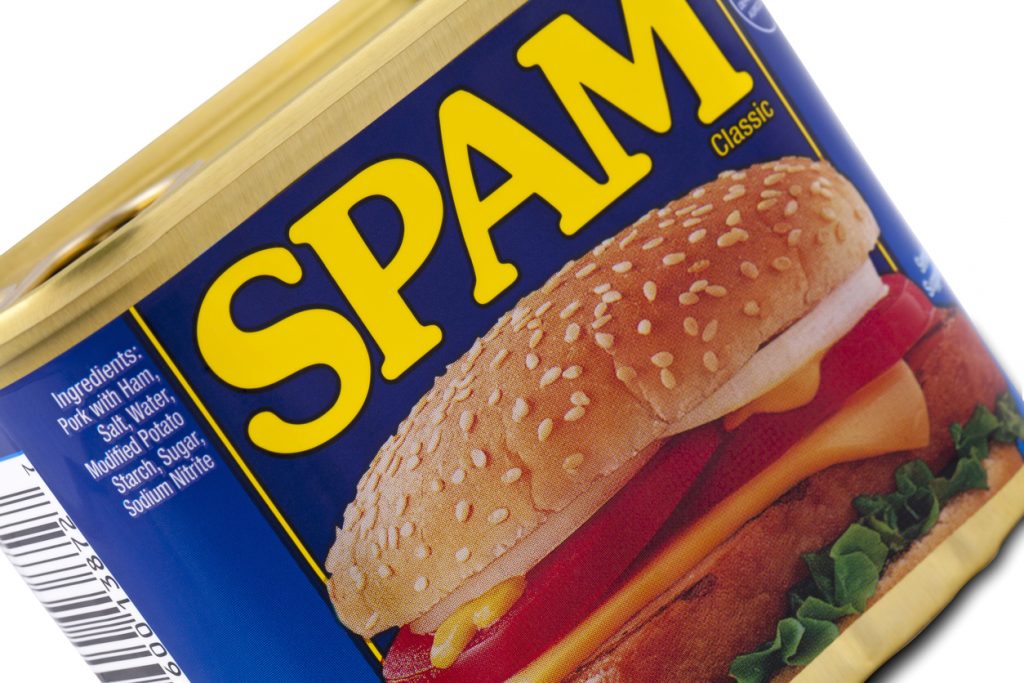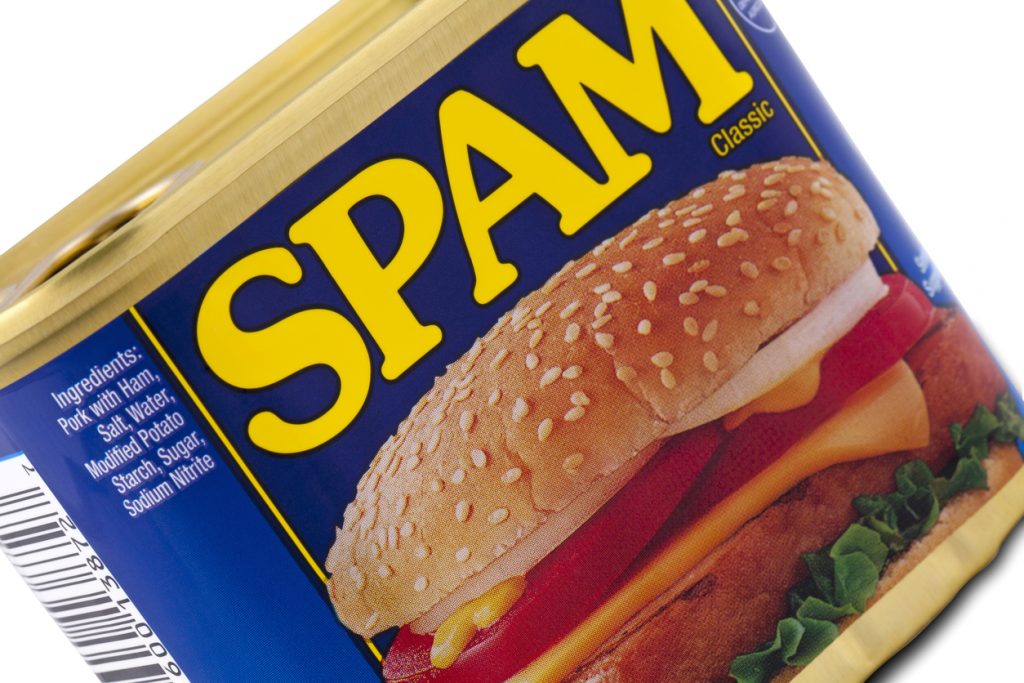Love it or leave it, the most famous canned meat in the world turns 80 years old this year. Here are some facts about Spam:, that pink loaf of salty, porky goodness.
The Beginning
While Spam has routinely and endlessly joked about as a mystery meat, it’s really just pork and ham. In the ‘20s, Hormel Foods purchased a surplus of thousands of pounds of pork shoulder. The company needed to do something with all that meat, and struck on the idea of chopping up the pork, blending it with ham, and canning it so it didn’t need refrigeration.
What’s in it?
What’s in Spam is no mystery—what the name means remains a secret. “Spam” is most likely a contraction of “spiced ham.” Sp + am = Spam! The son of Hormel’s founder, Jay C. Hormel, spearheaded the production and marketing of Spam. He offered a prize of $100 to his friends and family for a name he liked. At a 1936 New Year’s Eve party, actor Kenneth Daugneau (brother of a Hormel executive) suggested “Spam.”
World War II
The development of a shelf-stable, protein-rich, compact source of meat happened at the perfect time: World War II enveloped much of the globe in the late ‘30s and ‘40s, and 100 million cans of Spam were issued in ration packs to Allied soldiers.
Saving the Troops
Spam was particularly useful to Russian soldiers. After World War II, Russian premier Nikita Kruschev credited Spam for saving his troops. “Without Spam, we wouldn’t have been able to feed our army,” he said.
South Pacific
Spam also fed civilians throughout the South Pacific, before and after the war. It’s still considered a delicacy in Korea, and a popular fast food in Hawaii is Spam wusubi. It’s sort of like “Sushi”—it’s rice and a slab of Spam, wrapped up with a strip of seaweed.
Cook-Offs and Contests
Across, the country, about 70 state and county fairs host Hormel-sponsored Spam cook-offs and recipe contests.
Production and Consumption
Few people admit to liking it, but somebody is buying it: Americans consume around 115 million pounds of Spam every year. Spam processing facilities churn out 33,000 pounds of Spam every hour.
Spa’am
Hormel will sue over Spam. The company sued the Muppets, because a character in the 1996 film Muppet Treasure Island, a scary warthog, was named Spa’am.” Hormel alleged that the character could hurt sales because it was “evil in porcine form” and appeared “grotesque and noxious.” Judges dismissed the suit, on the grounds that Spam was a running joke in American culture. In the ruling, a judge pointed out that Hormel should “welcome the association with a genuine source of pork.”
Spam Museum
There’s a Spam Museum at Hormel’s headquarters in Austin, Minnesota. The company calls it “14,000 square feet about square meat.”









